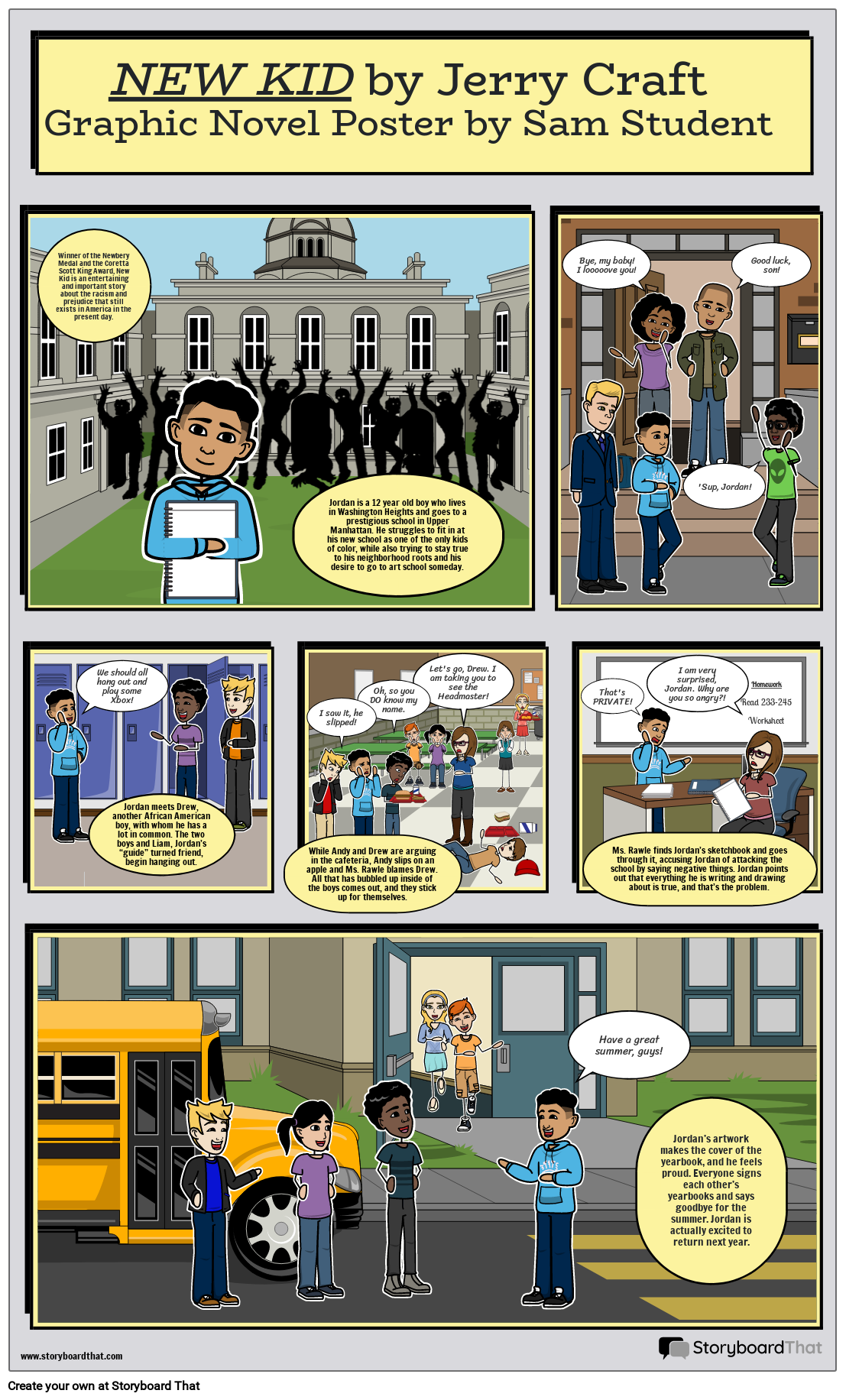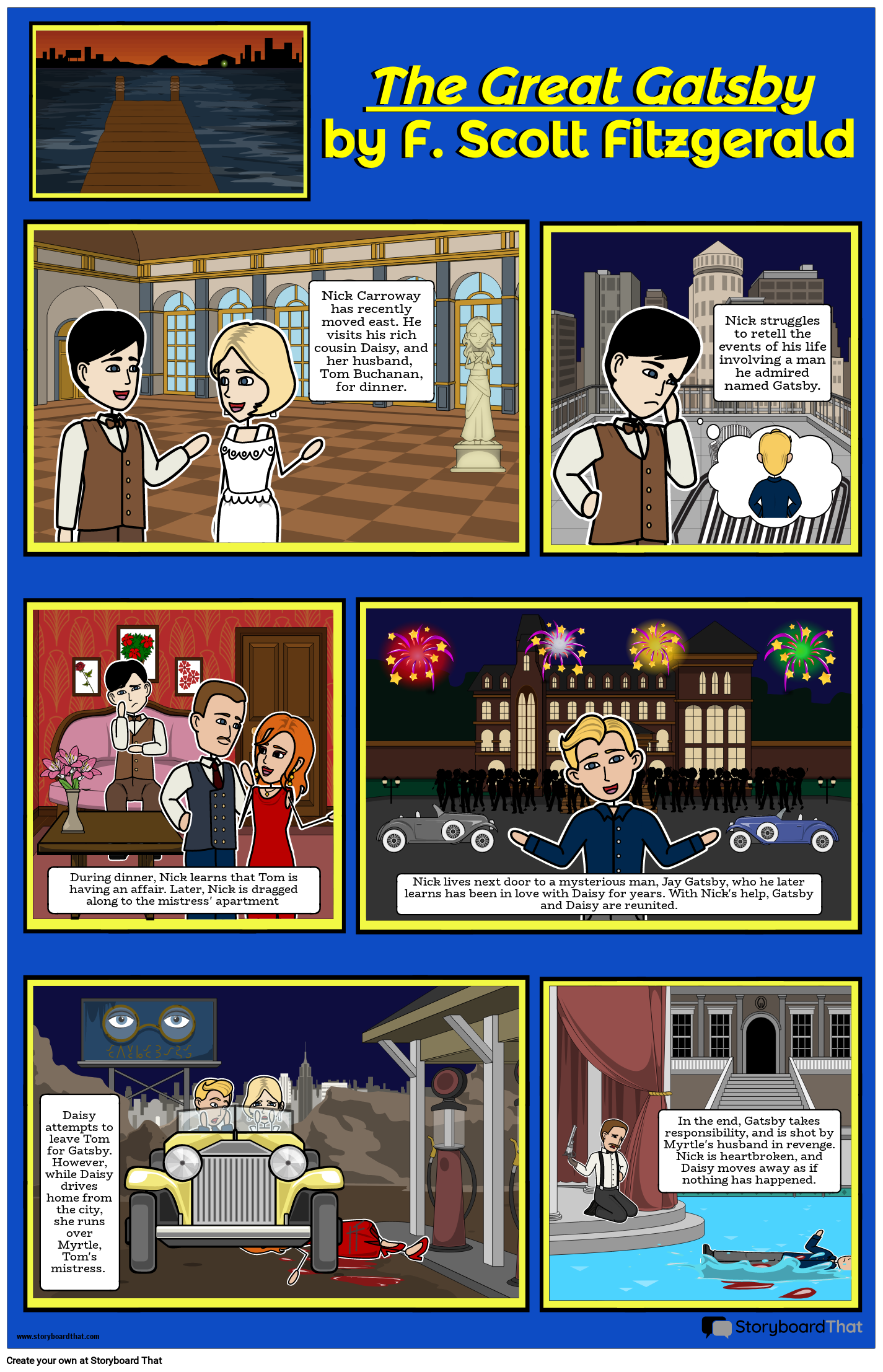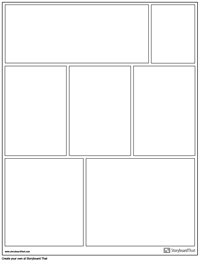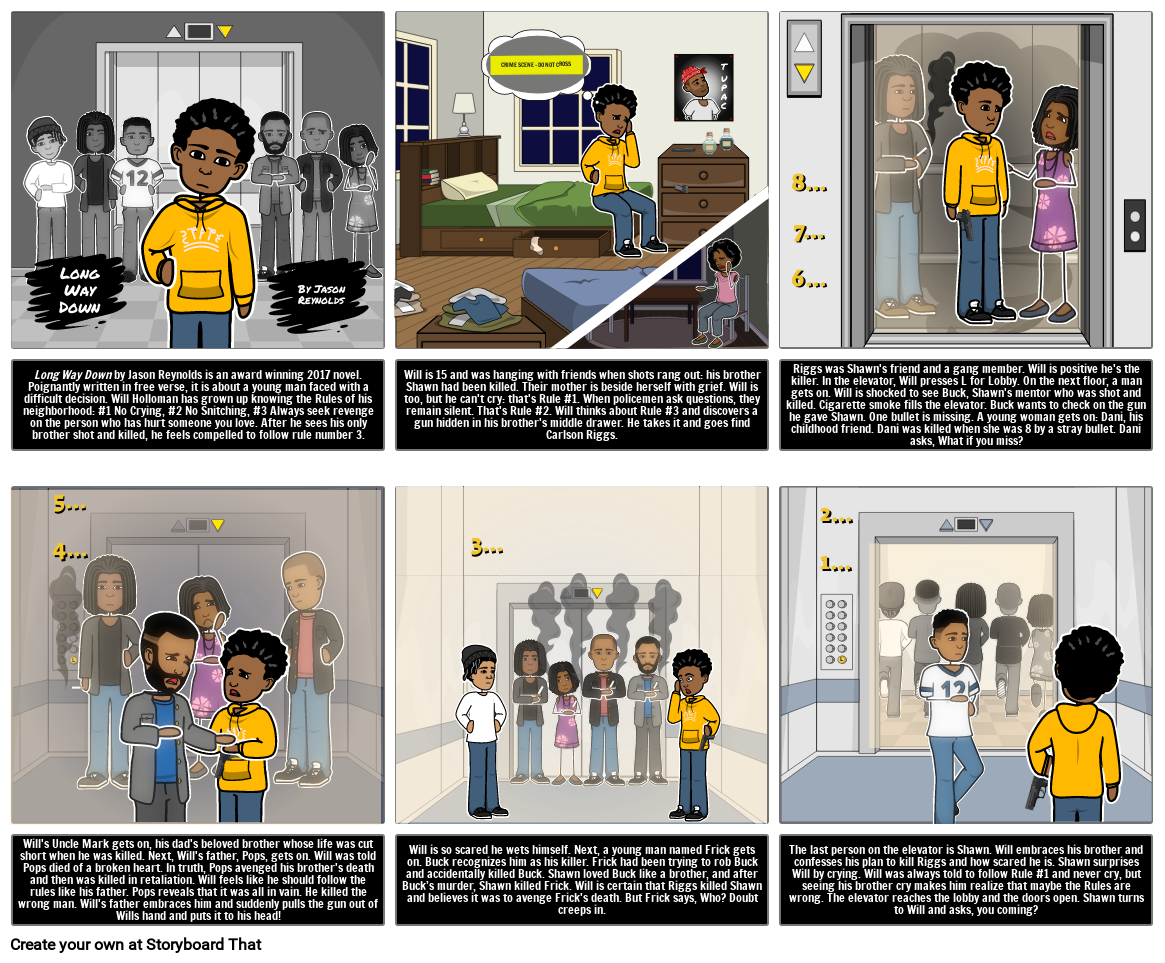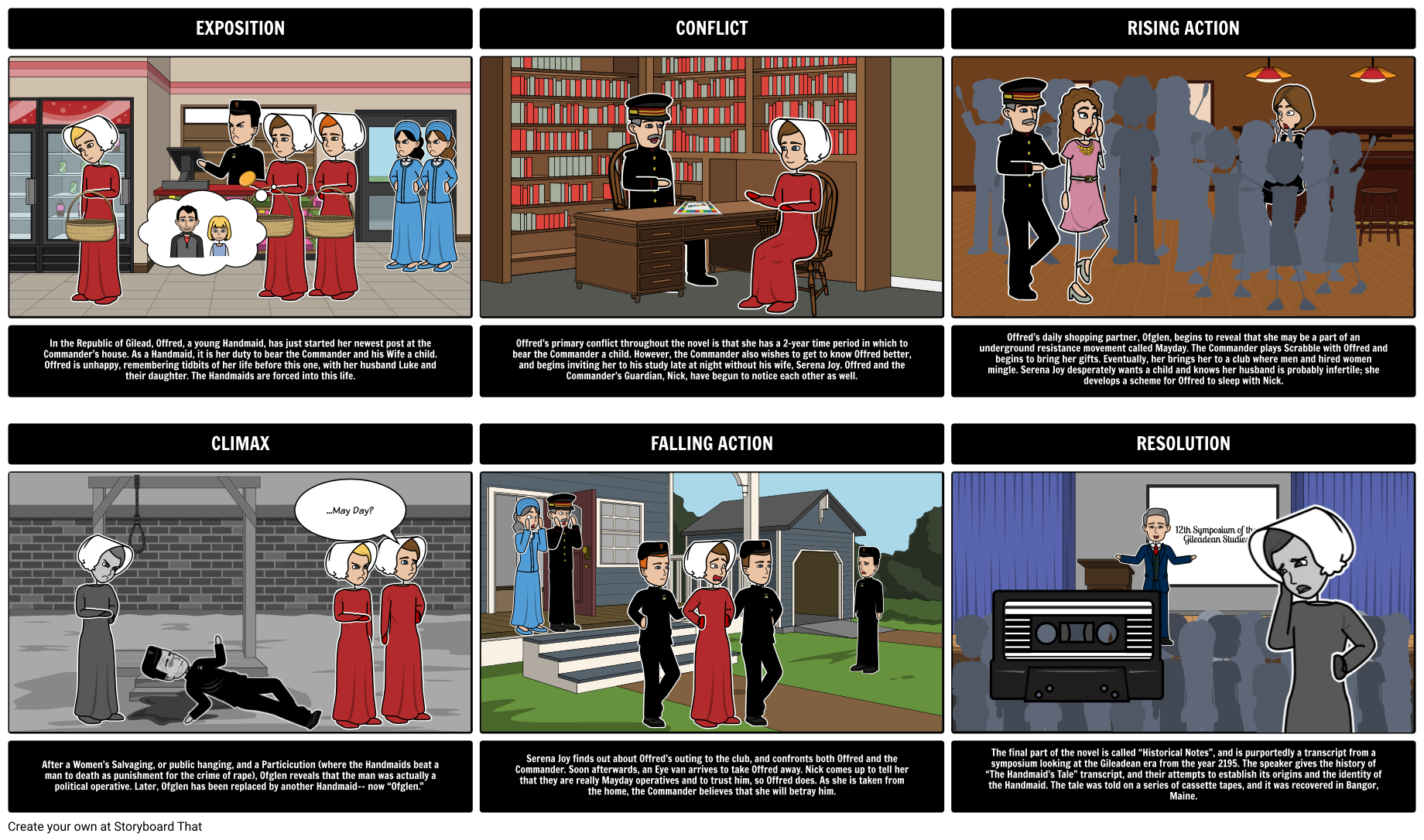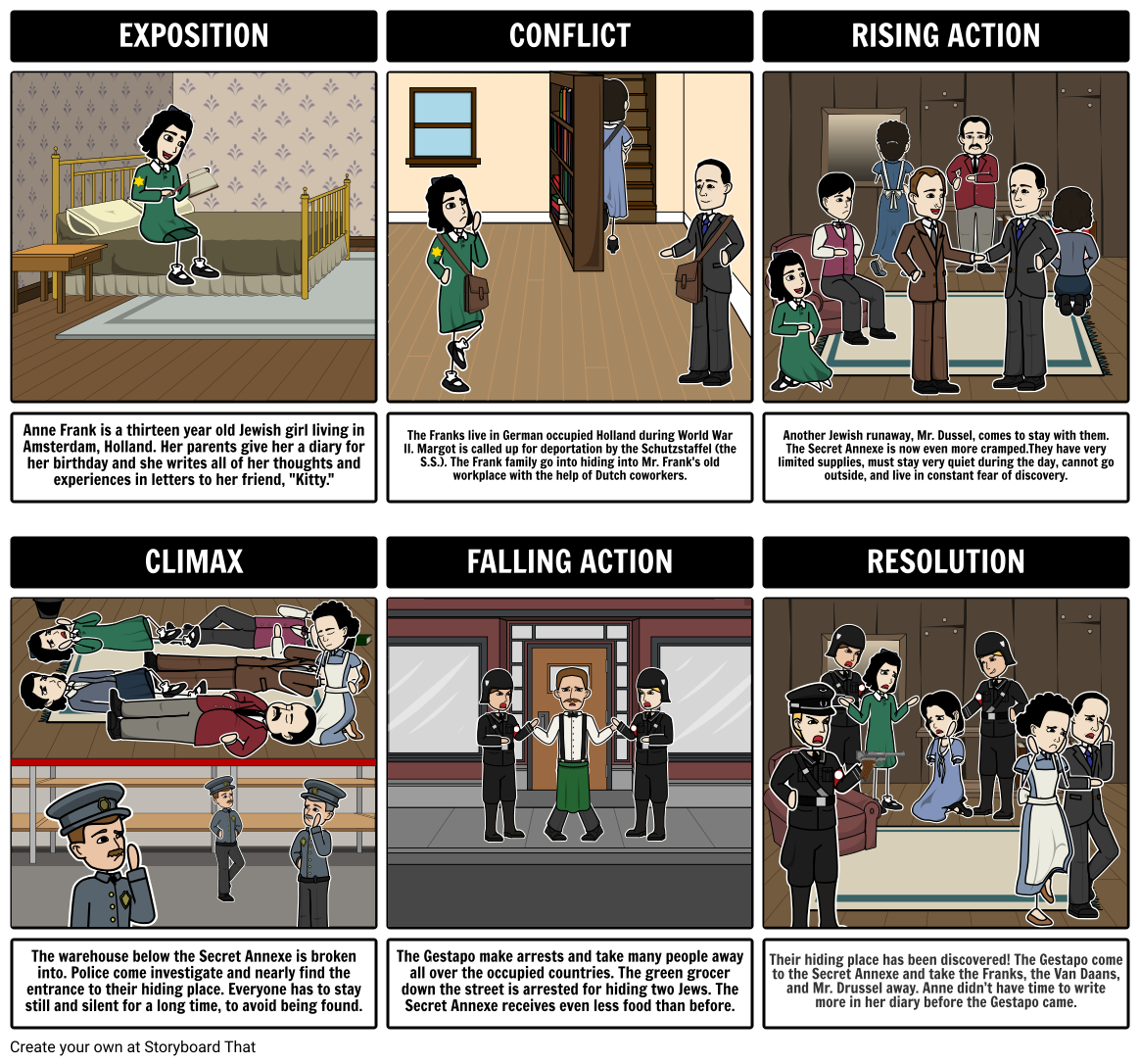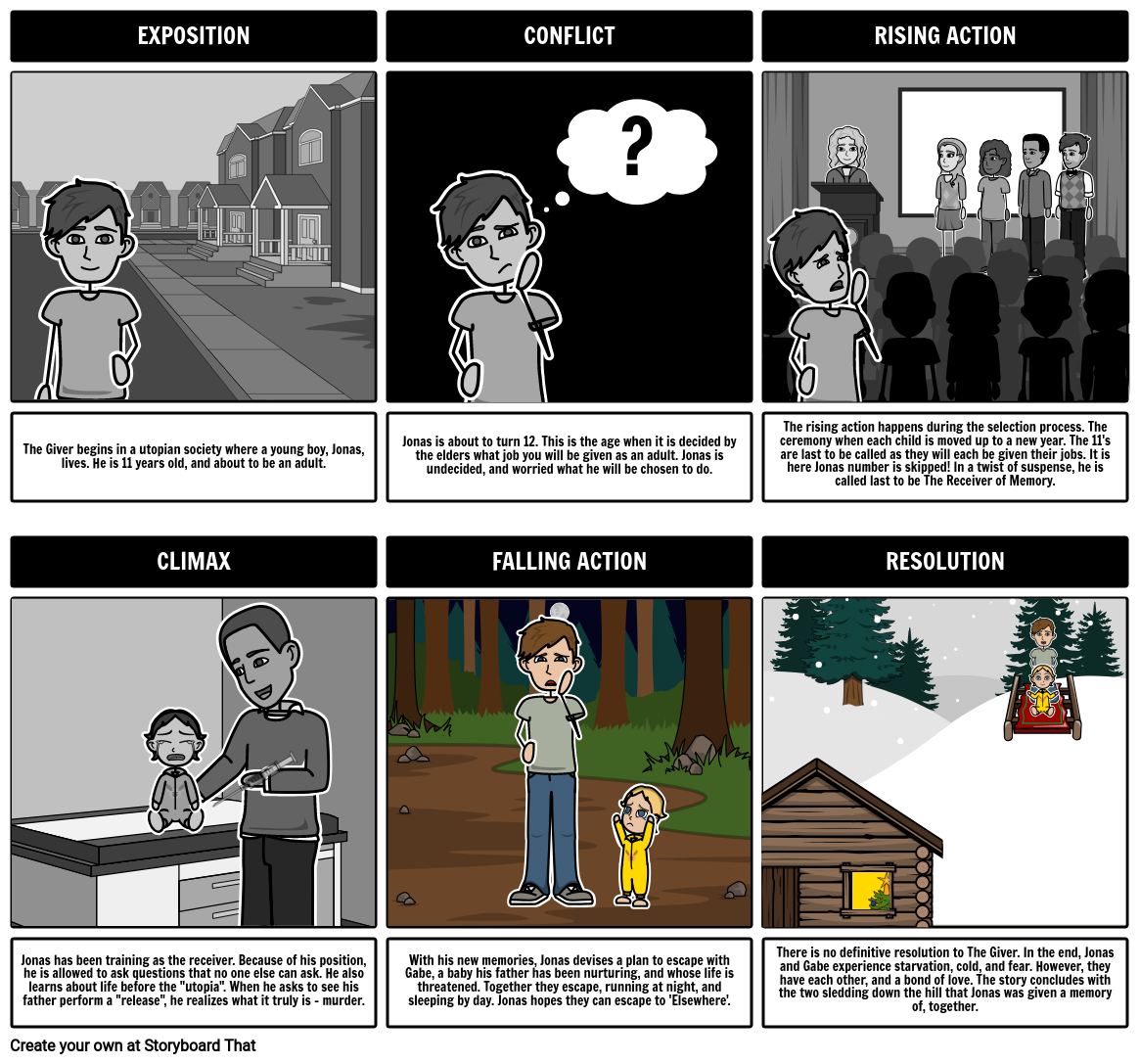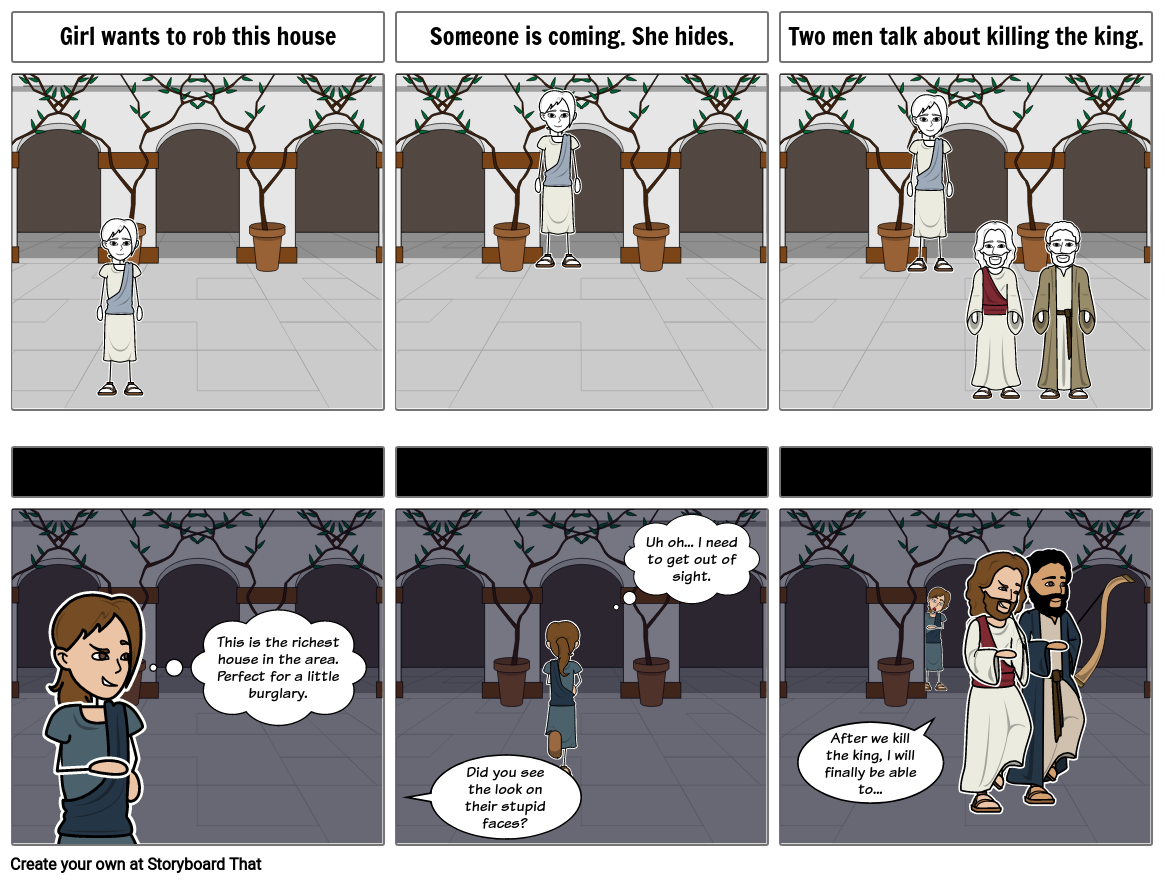Types Of Graphic Novels
The term graphic novel indicates is a rich tapestry of storytelling, encompassing a wide array of genres and themes. Understanding the different types is key to appreciating the diversity of this medium. Broadly, the medium can be classified into two primary categories: nonfiction and fiction.
Nonfiction
Nonfiction graphic novels, often referred to as graphic memoirs, explore real-life experiences and personal narratives. Some examples include: The 14th Dalai Lama: A Manga Biography, Tetris: The Games People Play, The Complete Maus: A Survivor's Tale, and Smile.
Fiction
On the other hand, graphic fiction takes readers on imaginative journeys, offering fantastical tales and fictional narratives. Delving into these categories allows readers and creators to explore the vast landscape of graphic novels, each offering its unique storytelling possibilities. Some well known examples include: The Dark Knight Returns, Diary of a Wimpy Kid, and New Kid.
Why Teach with Graphic Novels?
More and more teachers are encouraging their students to read graphic novels as part of their standard ELA curriculum. However, they are still sometimes given a bad rap because they make people think of poorly written comics - rather than great literary works with visual representation. "Graphic novel" really just means "long picture story" or "a novel in comic-strip format" and are often of the highest literary quality!
Comic books or graphic novels are a type of format for literature, not a genre. They can be in the form of fiction, non-fiction, history, fantasy; the sky's the limit! They use both illustrations and words in sequence to tell a story. Although the terms are often used interchangeably, graphic novels are generally more complex, stand-alone stories while comic books evoke the superhero genre. Both include detailed character descriptions and narrative arcs that are depicted in visuals as well as words.
In the earliest grades, when young readers are still learning letters and building vocabulary, they are encouraged to draw during "Writer's Workshop". As students get older, they are given fewer and fewer opportunities to create illustrated stories, despite the fact that we live in a very visual world. Most students (and teachers for that matter) are visual learners. Written skills are vital for college and the workplace, but images are as well. Social media, advertising, marketing, television, film, construction, engineering, and many more industries use imagery as a crucial part of their business.
Graphic Novel Project Ideas
New Kid by Jerry Craft and White Bird by R.J. Palacio, are examples of moving and thought provoking graphic novels taught at all levels. New Kid is popular for grades 3-6 while White Bird is often used in grades 4-7. The Great Gatsby by F. Scott Key Fitzgerald is a classic novel that has been taught in high school classrooms for decades. This graphic novel version adapted by Fred Fordham and Aya Mortonmakes allows this complex work to become accessible to all students. The storyboard graphic novels below are just a few examples of what students can create!
This project is the perfect way for younger readers and older kids to use their imaginations and write their own stories, summarize the plot of a graphic novel that they have read or to have students transfer their knowledge of another piece of literature into a different form. Many popular novels have been turned into graphic novels to meet a broader audience and introduce students of all abilities to classic works of literature.
How to storyboard a graphic novel can be daunting. But, never fear! We have many organizers to choose from in our templates collection. Check out our versatile Graphic Novel Templates! Remember, when giving your students an assignment in Storyboard That, you can add as many templates as you like to differentiate and provide student choice!
My point: Both images and words tell stories. Both images and words can tell great stories, on their own or together. Don't know how to make a comic book for a school project? These templates can help! Click on any of the storyboards below to be brought into the Creator to customize as you wish!
Exploring Graphic Fiction and Novel Examples
Creating a graphic novel requires a unique blend of narrative storytelling and visual artistry, making it a challenging yet rewarding creative process. How to create graphic novels that captivate readers and convey powerful narratives is a craft that many artists and writers strive to master through a combination of storytelling finesse and artistic expression. Examples of well-crafted graphic novels can serve as valuable guides, helping aspiring creators cultivate the skills and techniques needed to design their narratives effectively and engage readers visually.
- "Watchmen" by Alan Moore and Dave Gibbons is a quintessential example of graphic fiction, known for its intricate storytelling and thought-provoking exploration of complex characters and societal themes.
- "Fun Home" by Alison Bechdel and "Blankets" by Craig Thompson are both notable graphic memoir examples that artfully blend personal storytelling with the visual language of graphic novels, offering readers a unique and introspective experience.
- "Persepolis" by Marjane Satrapi is a compelling example of graphic novels that beautifully combines storytelling and illustration to tell a personal and historical narrative.
- Another example that has had a profound impact on the medium is "Maus" by Art Spiegelman, known for its powerful storytelling and unique visual style.
Popular Graphic Novel Examples for High School
Long Way Down by Jason Reynolds deals with mature themes and is a powerful book to introduce to middle and high schoolers in grades 8-12. While New Kid and White Bird were originally written as graphic novels, Long Way Down was a novel written in verse that was later converted into this format by Jason Reynolds and Danica Novogorodoff. Many high school English teachers have been incorporating graphic novel project ideas into their curriculum. They have included these versions of literature as both a way to reach all readers and to enhance the original literary work with visual art! Teachers and students have been overjoyed to find many of the classics that are often taught in school are now available in such an engaging format.
The comic book storyboard example below showcases how students can use Storyboard That to demonstrate their understanding and analysis as well as their creativity for a book like Long Way Down. Using the creator, students can retell a story or create a storyboard of their own!
Literary works of all genres are being adapted into graphic novel form. Some other graphic fiction examples of classic novels that are perfect for high schoolers are:
- The Handmaid’s Tale: The Graphic Novel by Margaret Atwood and Renee Nault
- The Odyssey by Homer and Gareth Hinds
- To Kill a Mockingbird: A Graphic Novel by Harper Lee and Fred Fordham
- Jane by Charlotte Brontë, Aline Brosh McKenna, and Ramón K. Pérez
- Animal Farm by George Orwell and Odyr
- Kindred: A Graphic Novel Adaptation by Damian Duffy and Octavia Butler
- Speak: The Graphic Novel by Laurie Halse Anderson and Emily Carrol
- Dune: The Graphic Novel by Brian Herbert, Kevin Anderson, Frank Herbert, and Raul Allen
Powerful graphic story examples written for high school students and adults are:
- The Complete Maus by Art Spiegelman
- The Complete Persepolis by Marjane Satrapi
- Anya’s Ghost by Vera Brosgol
- I Was Their American Dream: A Graphic Memoir by Malaka Gharib
- Lighter Than My Shadow by Katie Green/li>
- Displacement by Kiku Hughes
- Hey Kiddo: How I Lost My Mother, Found My Father, and Dealt with Family Addiction by Jarrett J. Krosoczka
- March Trilogy by John Lewis, Andrew Aydin, L. Fury, and Nate Powell
- I Am Alfonso Jones by Tony Medina, John Jennings, and Stacey Robinson
Utilizing a comic book graphic organizer helps students dissect complex literary works. Check out the comic book storyboard examples below for the classics: The Handmaid’s Tale, Animal Farm, To Kill a Mockingbird, and The Odyssey.
Popular Graphic Novel Examples for Middle School
Some examples of popular literature turned into graphic novels that are perfect for middle schoolers are:
- The Graveyard Book by Neil Gaiman and P. Craig Russell
- The Giver: The Graphic Novel by Lois Lowry and P. Craig Russell
- Anne Frank's Diary: The Graphic Adaptation by Anne Frank, David Polonsky and Ari Folman
In addition, some examples for middle school include:
- They Called Us Enemy by George Takei, Justin Elsinger, Steven Scott, and Harmony Becker;
- Awkward by Svetlana Chmakova
- All’s Faire in Middle School by Victoria Jamieson
- Sunny Side Up by Jennifer L. Holm & Matthew Holm
- Real Friends by Shannon Hale and LeUyen Pham
- Nathan Hale’s Hazardous Tales by Nathan Hale
- The Witch Boy by Molly Knox Ostertag
- Smile, Drama, and Ghosts by Raina Telgemeier
These storyboards depicting the narrative arc of the story for The Giver and The Diary of Anne Frank are an engaging way for students to summarize the important parts of a story in graphic novel form.
Popular Graphic Novel Examples for Elementary School
An example of a classic book that was turned into a graphic novel that is compelling for upper elementary school is:
- A Wrinkle in Time: The Graphic Novel by Madeleine L'Engle and Hope Larson
More examples of award-winning graphic novel stories that elementary students love are:
- Smile by Raina Telgemeier
- El Deafo by Cece Bell
- Amulet by Kazu Kibuishi
- Bone by Jeff Smith
- New Kid by Jerry Craft
- Diary of a Wimpy Kid by Jeff Kinney is "hybrid" or cross between a typical novel and a graphic novel as it integrates drawings within the text.
Reading graphic novels with students and using these lesson plans in the classroom engages even the most reluctant readers. Once they are captivated, they will forget that they are reading a complex work of literature that encourages them to utliize their critical thinking skills! The copiable storyboards below depict examples of what a student could make if they were to turn A Wrinkle in Time or New Kid into their own graphic novel.
How to Make a Graphic Novel on Storyboard That
Learning how to create graphic novels requires a combination of narrative skill and visual artistry, making it an exciting and multifaceted creative endeavor. Exploring how to make a comic book for school projects can be a fun and educational endeavor, allowing students to combine their creativity and storytelling skills in a visually engaging format. The parts, such as panels, speech bubbles, and page layout, all play crucial roles in conveying the story and engaging the reader visually and narratively.
A graphic novel is not just a quick comic that can be told in a few cells, it's a longer narrative. So, that means lots and lots of pictures. However, pictures are not the only part of a graphic novel. Again: novel. While you may not be interested in having your students create hundreds of pages, short stories and modern adaptations of classic literature make an excellent graphic novel project. In addition to forming a plot, students still need to consider literary conflict, character development, themes, and a whole host of other literary elements.
True professional novel writing usually takes months, and more likely years, to complete. A professionally published graphic novel is no different. Graphic novels require the same writing process as any storytelling project. My example below is not a finished product, but it is a great start. Take a look at this quick guide to the writing process, so you and your students can get crackin'!
How to Plan a Graphic Novel Project

Graphic story writing engages all of the same critical thinking skills of classic pen to paper writing. It is important to help students brainstorm their graphic story ideas by providing structured steps or scaffolding the assignment. Students can ask themselves: What is the story going to be about? What is the setting? Who are the main characters? Who are the supporting characters? What is the main conflict? What happens in the end? These are all important big ideas to think about when planning. Details come later, focus on the big picture.
Need some help? Check out the article on spider maps, our storyboard templates, the "Story Starters" activity, or create your own graphic organizer to plan!
You can make your own handy visual for the steps in the writing process like the one on the left using our How-To Infographic Templates!
Make a Draft
Drafting with a storyboard is a lot of fun! Any graphic novel format can begin with a draft storyboard which is when your story really comes together. Take all those ideas and arrange them into a basic story structure. This could look very different for a graphic novel than a piece of straight writing. It might involve putting characters and/or scenes in the cells, but not customizing them. A handy trick with the Storyboard Creator is copying and moving cells. That way, you can add more cells in between other cells, copy cells and make slight changes, rearrange cell order, and more.
Drafts are supposed to be sketches of the final project, not the final story. The first draft and the published work could be miles apart - and that's fine. Don't try to get everything right the first time - it will only be frustrating. The draft is there just to get the ideas in a coherent (or not) order - to move into the shape of a story. It is not until all of the ideas are laid out before you that you can make sense of them and make them good!
If you want to add another level to the storytelling when drafting, check out some pre-made graphic novel layouts that can be assigned as a template. Playing with the layout and flow will help inform pacing and action, and really take your creativity to the next level!
Revise
You've got the basics. Now it is time for you to work in some magic: details, descriptions, new ideas, new angles, color, poses, speech bubbles, cropping, layering, customization... This is when you get to SEE your story unfolding.
Pro Tip: Copy the work you've already done. Save time by copying characters, scenes, and items that are already in your storyboard instead of looking for them again. That way, you will have the same color and/or filter choices selected. Copy entire cells if some things stay the same from frame to frame, especially if the action occurs in the same scene. You can still adjust everything to suit the needs of the new cell.
In the example storyboard below, the top row represents a very basic idea of what I want to happen in the story, or my draft. The bottom row shows what it might look like after I have solidified my story and started to make revisions and add details.
Revise Again
Yep. The revision stage can last a long time. Revising is my favorite part, but it is also the hardest part. Changing the hard work you have already put in might be difficult to take. That being said, I suggest having someone else look at your work during an optional peer-revision step. It is important that someone that doesn't have the story mapped out in their head can follow!
Edit
Check to make sure you have the colors you want, the cropping right, the transitions just how you want them. Are all the words spelled correctly? Do you have the right punctuation? Is the progression of cells clear to the reader?
Proofread
Yes, you spent some time editing. Now is the time that you get that magnifying glass out. You might even want to have someone else proofread your work, since you have already gone over it many times.
Publish
Share your work in class or online. Storyboard That has several options to print your amazing graphic novel, too. There is nothing like holding a published piece of your work in your hand.

Add in video and audio for some amazing digital storytelling! Be sure to check out Storyboard That with PPT and More for more ideas on what to do with your masterpiece.
My First Chapter of Juniprix
Related Activities
How To Integrate Graphic Novels With Other Subjects In The Classroom Using Effective Cross-Curricular Connections
Choose The Appropriate Graphic Novel
Select a graphic novel that is appropriate for your subject area and grade level. Consider the themes and concepts that you want to teach and choose a graphic novel that aligns with your goals.
Plan The Cross-Curricular Connections
Identify specific connections between the graphic novel and other subjects. For example, a graphic novel about a historical event can be used to teach history, while a graphic novel about climate change can be used to teach science.
Introduce The Graphic Novel
Introduce the graphic novel to students and provide context for the subject area and themes that it explores. Preview the graphic novel and discuss any unfamiliar terminology or historical events.
Read And Analyze The Graphic Novel
Read the graphic novel with students and analyze it using specific critical thinking skills. For example, in a social studies class, students can analyze the author's use of imagery to convey historical events or the use of dialogue to develop characters.
Make Cross-Curricular Connections
Incorporate the cross-curricular connections that you planned into the lesson. For example, in a science class, students can analyze a graphic novel about climate change and use it as a springboard for a research project on the topic.
Assess Student Learning
Assess student learning using a variety of methods, such as a quiz, a written response, or a project. Provide feedback on student work and assess whether they have met the learning goals for the lesson.
Reflect On The Lesson
Reflect on the lesson and evaluate its effectiveness. Consider what worked well and what could be improved for next time. Make adjustments as needed to improve the integration of graphic novels with other subjects in the classroom.
Frequently Asked Questions about Graphic Novels
What Is Manga?
Manga is a style of comic books and graphic novels originating from Japan but embraced by readers worldwide. It is characterized by its black-and-white art style and iconic character design, featuring expressive, often large eyes. Manga encompasses a wide spectrum of genres, appealing to various age groups, and is typically serialized in magazines before being compiled into volumes. The reading direction is right-to-left, with different demographics like shonen for boys, shojo for girls, seinen for men, and josei for women. Manga artists often have unique styles, and popular series like "Naruto," "One Piece," and "Attack on Titan" have made manga a global phenomenon with a diverse and devoted fan base.
How do comic books differ from graphic novels?
Comic books and graphic novels are both sequential art forms, but they differ primarily in their format and content. Comic books are shorter, serialized publications, often with a stapled or saddle-stitched binding. They are typically part of an ongoing series and are generally shorter in length. Graphic novels, on the other hand, are longer, self-contained works with a more complex and extended narrative. They are often published as standalone books and cover a wider range of genres and subject matter, making them suitable for diverse readerships. While both mediums use illustrations and text to tell a story, graphic novels tend to offer more depth and sophistication in their storytelling, character development, and artistic quality, making them a distinct and respected form of literature within the realm of comics.
What are the key elements of a graphic novel?
Graphic novels, as a medium for storytelling, combine both visual and literary elements to convey a narrative. Some of the key elements that contribute to the structure and effectiveness of graphic novels are visual art, narrative structure, characters, text, layout, themes, design, and other genre-specific elements.
© 2024 - Clever Prototypes, LLC - All rights reserved.
StoryboardThat is a trademark of Clever Prototypes, LLC, and Registered in U.S. Patent and Trademark Office


